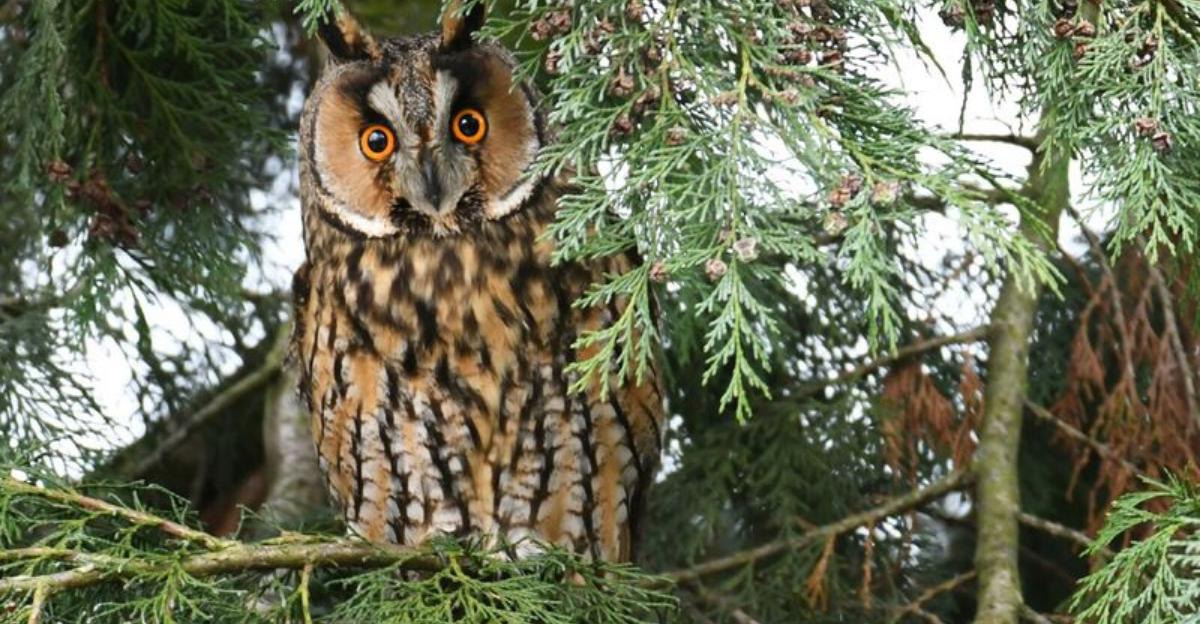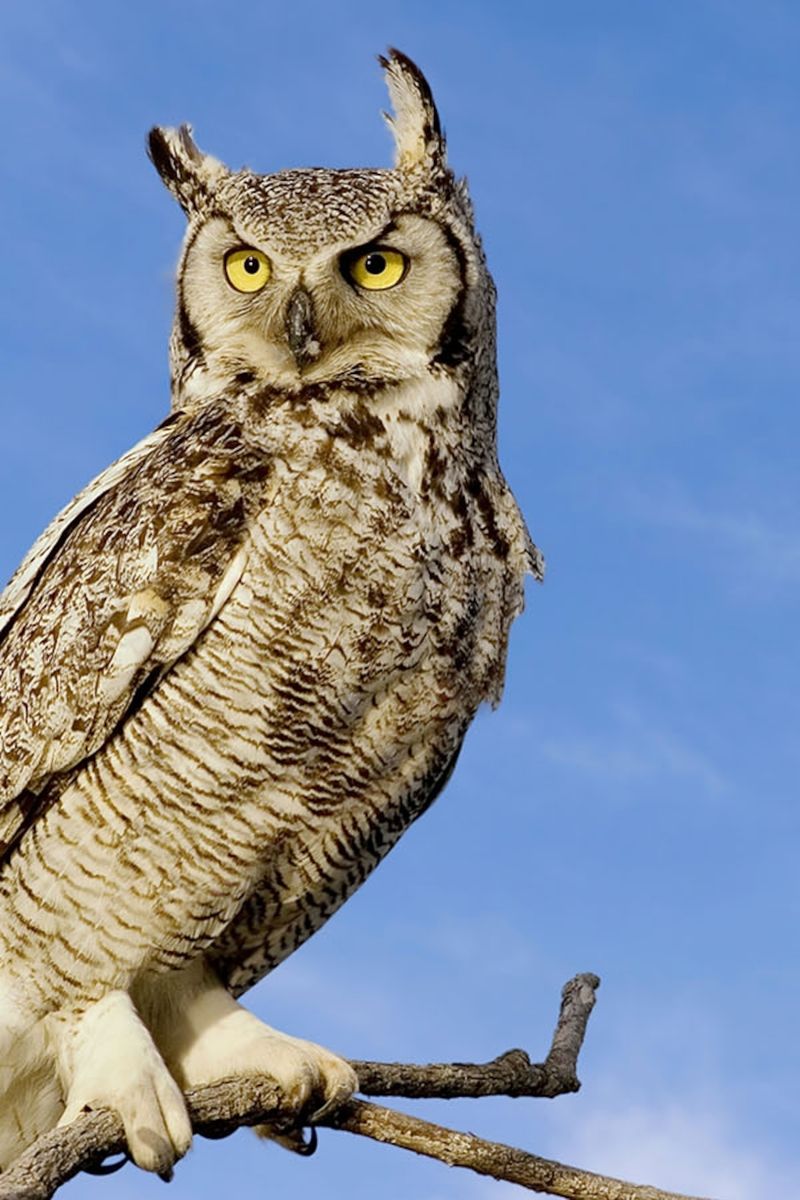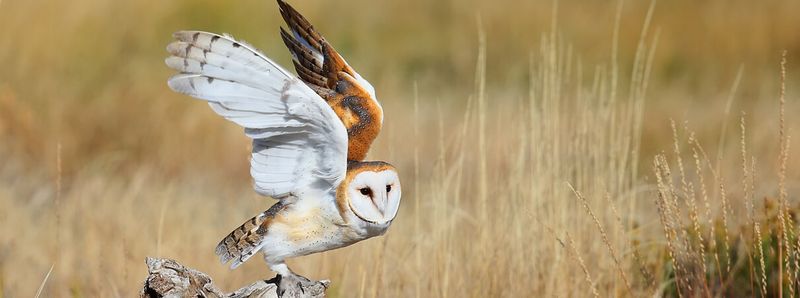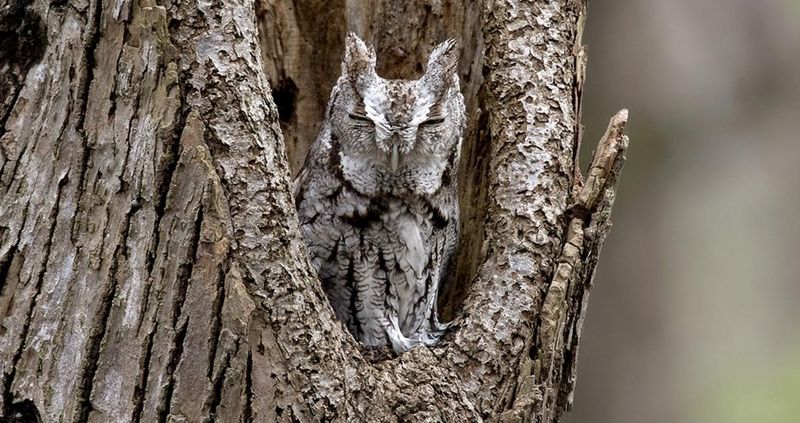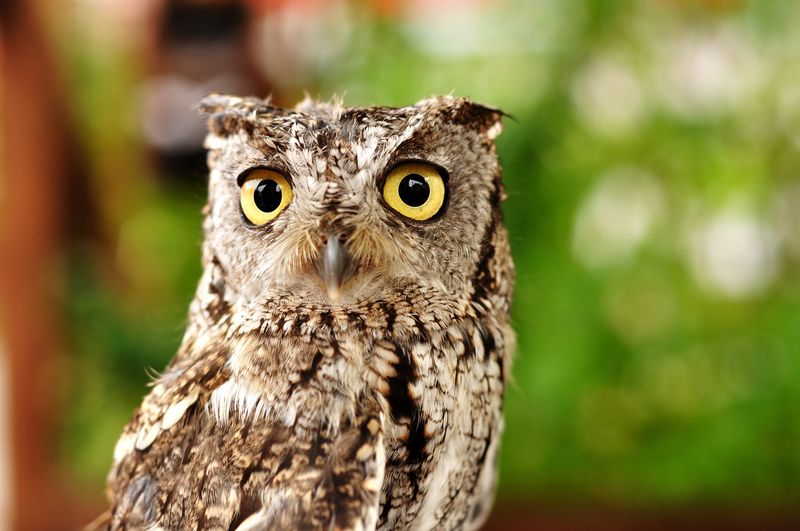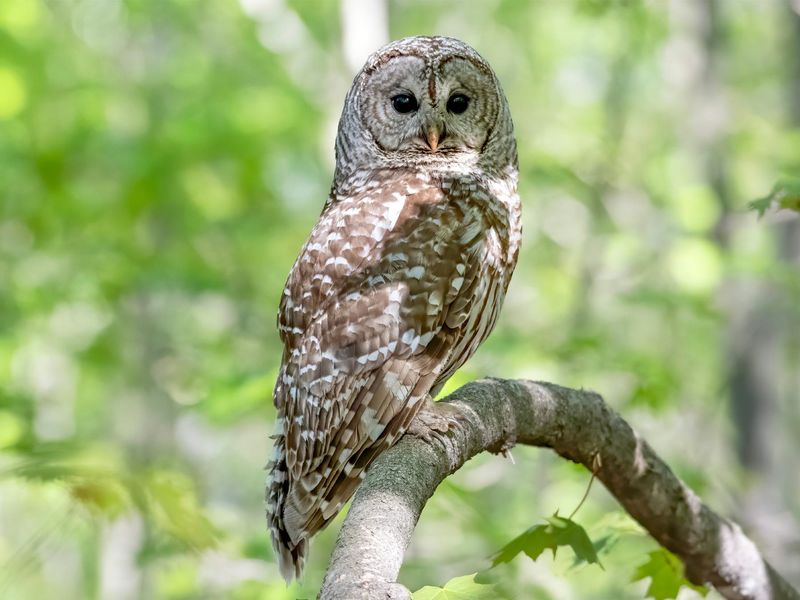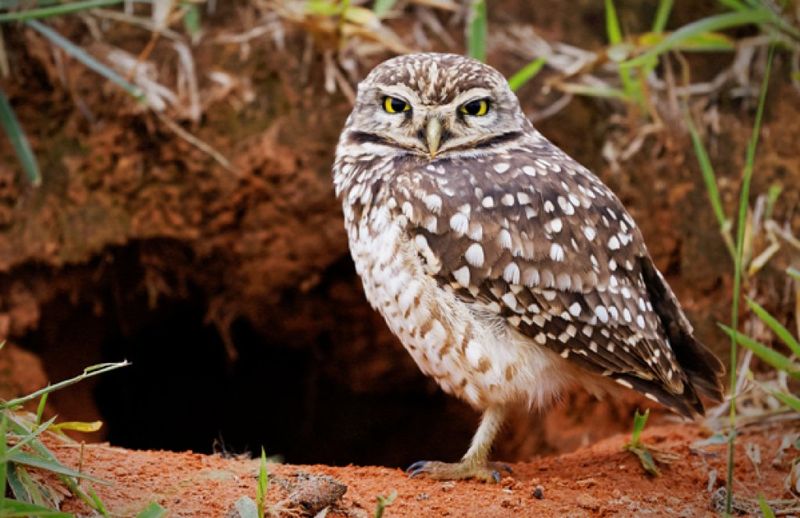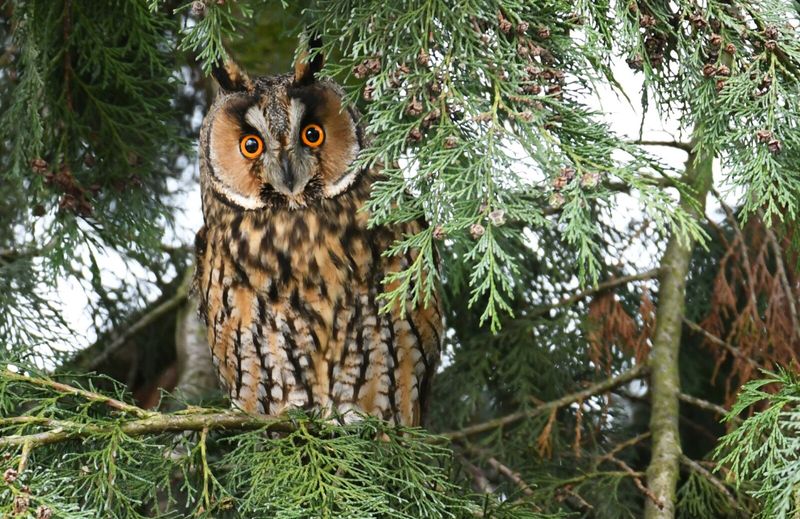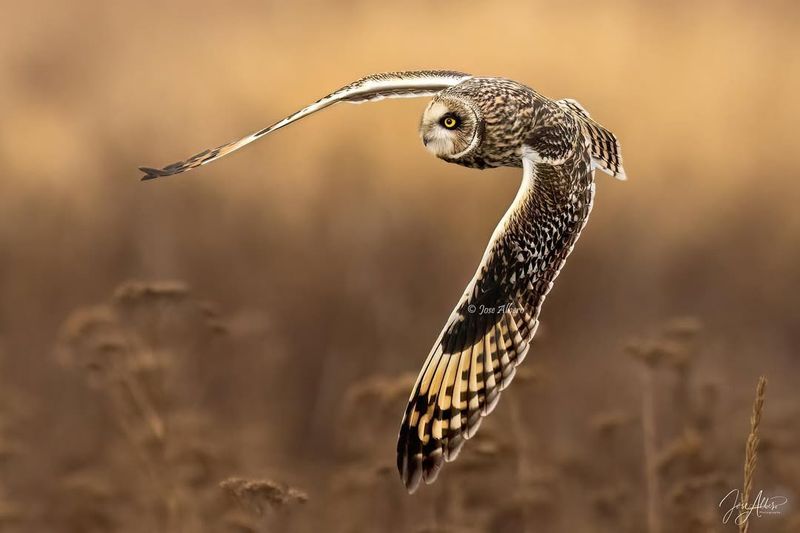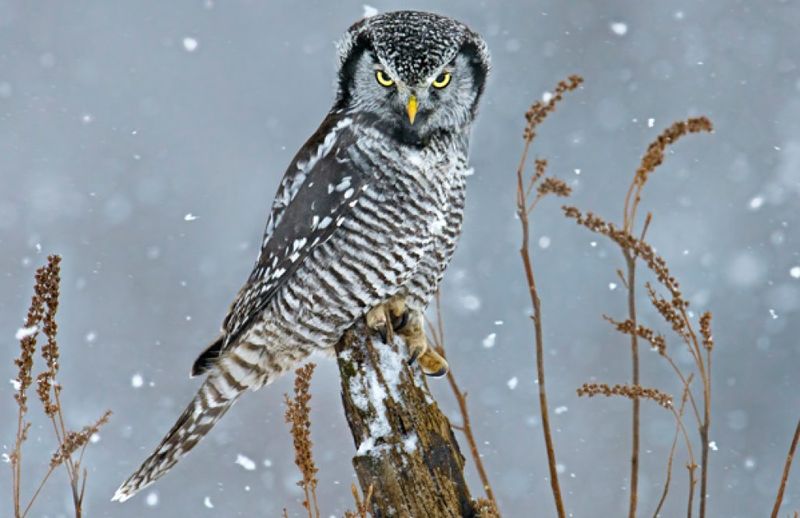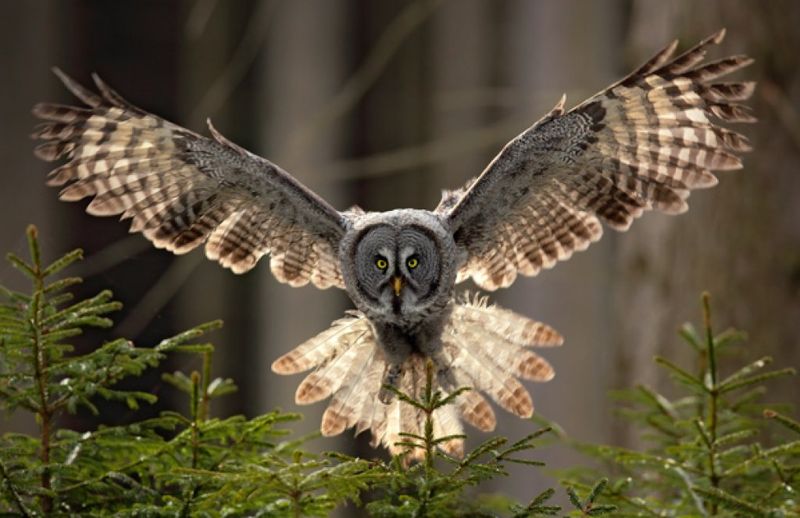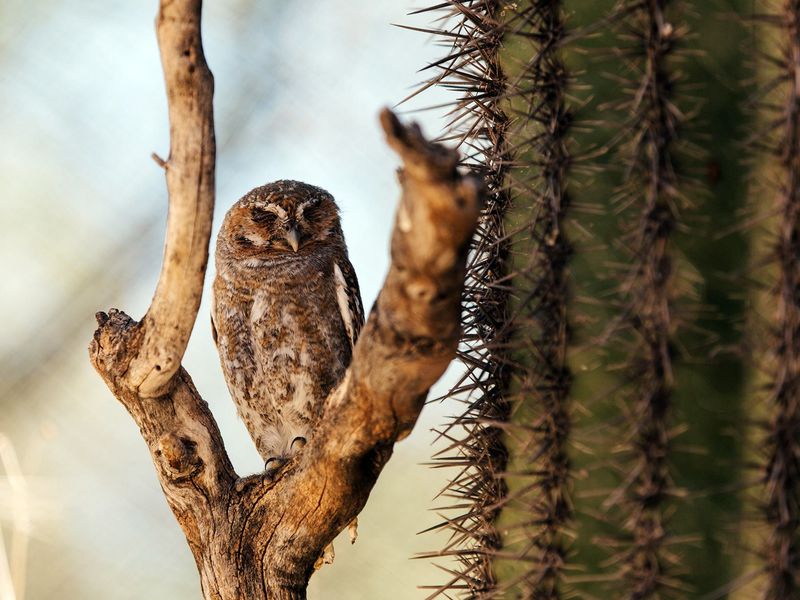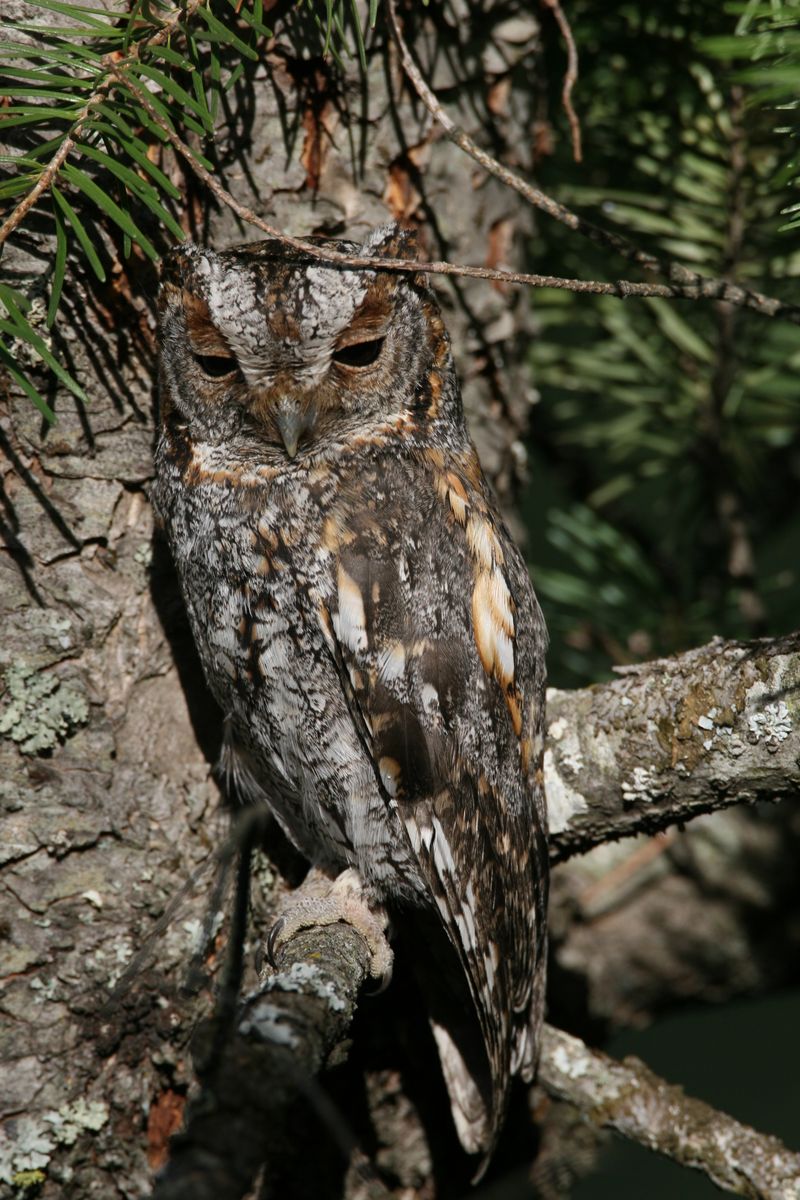North America is home to a remarkable variety of owl species, each with its own distinct characteristics and charm.
From the haunting calls of the Great Horned Owl to the elusive presence of the Barn Owl, these birds of prey capture the imagination of bird enthusiasts and casual observers alike.
In this blog post, we’ll explore 14 fascinating owl species found across the continent, offering insights into their unique behaviors, habitats, and appearances.
Whether you’re an avid birder or simply curious about these enigmatic creatures, this guide will provide an engaging glimpse into the world of North American owls.
1. Great Horned Owl
The Great Horned Owl commands attention with its striking appearance and powerful presence. Known for its distinctive ear tufts, this owl inhabits a range of environments, from woodlands to urban areas.
Its adaptability is unmatched, making it one of the most widespread owl species in North America. Primarily nocturnal, the Great Horned Owl is an apex predator, preying on mammals, birds, and reptiles.
Its call, a series of deep hoots, is a familiar sound in the night. This owl’s strength and versatility ensure its prominence in the avian world.
2. Barn Owl
With its ghost-like appearance and silent flight, the Barn Owl is a master of stealth. This owl’s heart-shaped face aids in locating prey, making it a formidable hunter of rodents.
Typically found in open habitats like fields and meadows, Barn Owls are known for their eerie, raspy calls. They nest in barns and abandoned buildings, often close to human settlements. Their ability to thrive in diverse environments highlights their adaptability.
3. Snowy Owl
The Snowy Owl captivates with its stunning white plumage and piercing yellow eyes. Native to the Arctic regions, it is a symbol of the tundra’s wild beauty. Unlike many owls, the Snowy Owl is often active during the day, especially in winter months.
Its diet mainly consists of lemmings and small mammals, reflecting its Arctic adaptation. The Snowy Owl travels great distances, sometimes appearing far from its usual range.
Its majestic presence and adaptability to harsh climates make it a fascinating subject for bird lovers.
4. Eastern Screech-Owl
The Eastern Screech-Owl is a small yet feisty presence in North America’s woodlands. Its ability to blend into tree bark exemplifies its remarkable camouflage skills. Despite its size, it is a skilled hunter, feeding mainly on insects and small vertebrates.
Known for its trilling song, the Eastern Screech-Owl varies in color from gray to reddish-brown. Its adaptability to urban and rural areas makes it a familiar sight to many. This little owl’s charm lies in its resilience and versatility.
5. Western Screech-Owl
The Western Screech-Owl thrives in the arid landscapes of the western United States. Its compact size and cryptic coloration provide excellent camouflage in rocky terrains. This owl’s diet includes insects, small mammals, and birds, showcasing its opportunistic feeding habits.
Its soft, descending whistle is a common sound in its range. The Western Screech-Owl’s adaptability to various habitats, from deserts to suburban areas, illustrates its tenacity. Its subtle beauty and enigmatic presence make it a favorite among birdwatchers.
6. Barred Owl
The Barred Owl enchants with its soulful eyes and haunting call. Commonly found in mature forests, its presence is often announced by a series of hoots and cackles. Its name derives from the distinctive barring patterns across its chest.
This owl’s diet is diverse, including small mammals, birds, and amphibians. The Barred Owl’s adaptability to changing landscapes has allowed it to expand its range. Its mysterious allure and vocal repertoire make it a beloved species among nature enthusiasts.
7. Northern Saw-whet Owl
The Northern Saw-whet Owl, with its diminutive size and charming demeanor, captures the hearts of those who encounter it. Primarily nocturnal, it relies on its acute hearing and vision to hunt small rodents. Its gentle, repetitive tooting call echoes through the forest at night.
Found in dense forests and thickets, this owl’s elusive nature adds to its allure. The Northern Saw-whet Owl’s endearing appearance and secretive habits make it a delightful discovery for bird lovers.
8. Burrowing Owl
The Burrowing Owl defies convention among owls by living in underground burrows. Found in open prairies and grasslands, its long legs enable it to sprint across the ground in pursuit of prey.
Active during the day, especially at dawn and dusk, this owl feeds on insects and small mammals. Its burrows, often shared with prairie dogs, provide shelter and protection. The Burrowing Owl’s distinctive lifestyle and lively antics make it a fascinating addition to any birdwatching list.
9. Long-eared Owl
The Long-eared Owl is known for its striking ear tufts and slender silhouette. Preferring dense forests and groves, it roosts in thick foliage by day and hunts by night. Its diet primarily consists of small mammals, which it captures with remarkable agility.
The Long-eared Owl’s call, a series of low hoots, can be heard echoing through the woods. Its secretive nature and elegant appearance make it a sought-after sighting for birdwatchers.
10. Short-eared Owl
The Short-eared Owl’s agile flight and keen vision make it a formidable predator in open landscapes. Found in grasslands and marshes, it is one of the few owls active during daylight. Its diet includes rodents and birds, captured in dramatic aerial pursuits.
The Short-eared Owl’s distinctive, moth-like wingbeat is a spectacle to behold. Its adaptability to various environments and unique hunting style make it an intriguing species for nature enthusiasts.
11. Northern Hawk Owl
The Northern Hawk Owl combines the fierce gaze of a hawk with the enigmatic demeanor of an owl. Found in boreal forests, it is primarily diurnal, hunting during the day. Its diet consists of small mammals and birds, captured with swift precision.
The Northern Hawk Owl’s long tail and swift flight resemble that of a hawk, adding to its unique appeal. Its striking appearance and northern habitat make it a prized sighting for birdwatchers.
12. Great Gray Owl
The Great Gray Owl, with its impressive size and majestic presence, is the ‘Phantom of the North.’ Inhabiting boreal forests, it is known for its keen hunting skills and silent flight.
Its large facial disc enhances its hearing, allowing it to detect prey beneath deep snow. The Great Gray Owl’s striking appearance and elusive nature make it a revered species. Its ability to survive in harsh northern climates is a testament to its resilience.
13. Elf Owl
The Elf Owl, the smallest owl in North America, is a marvel of adaptation. Inhabiting deserts and scrublands, it nests in cactus hollows or abandoned woodpecker holes.
Primarily insectivorous, it feeds on moths and beetles, showcasing its nimble hunting skills. Despite its size, the Elf Owl’s presence is felt through its cheerful calls at dusk. Its diminutive stature and desert habitat make it a unique gem among owl species.
14. Flammulated Owl
The Flammulated Owl, with its understated elegance, is a master of disguise. Found in montane forests, it is named for the flame-like patterns on its plumage. Primarily insectivorous, this owl’s soft hoots often go unnoticed by passersby.
Its migration habits take it across vast distances, reflecting its resilience. The Flammulated Owl’s subtle charm and discreet presence make it an intriguing subject for those seeking a deeper connection with nature.
